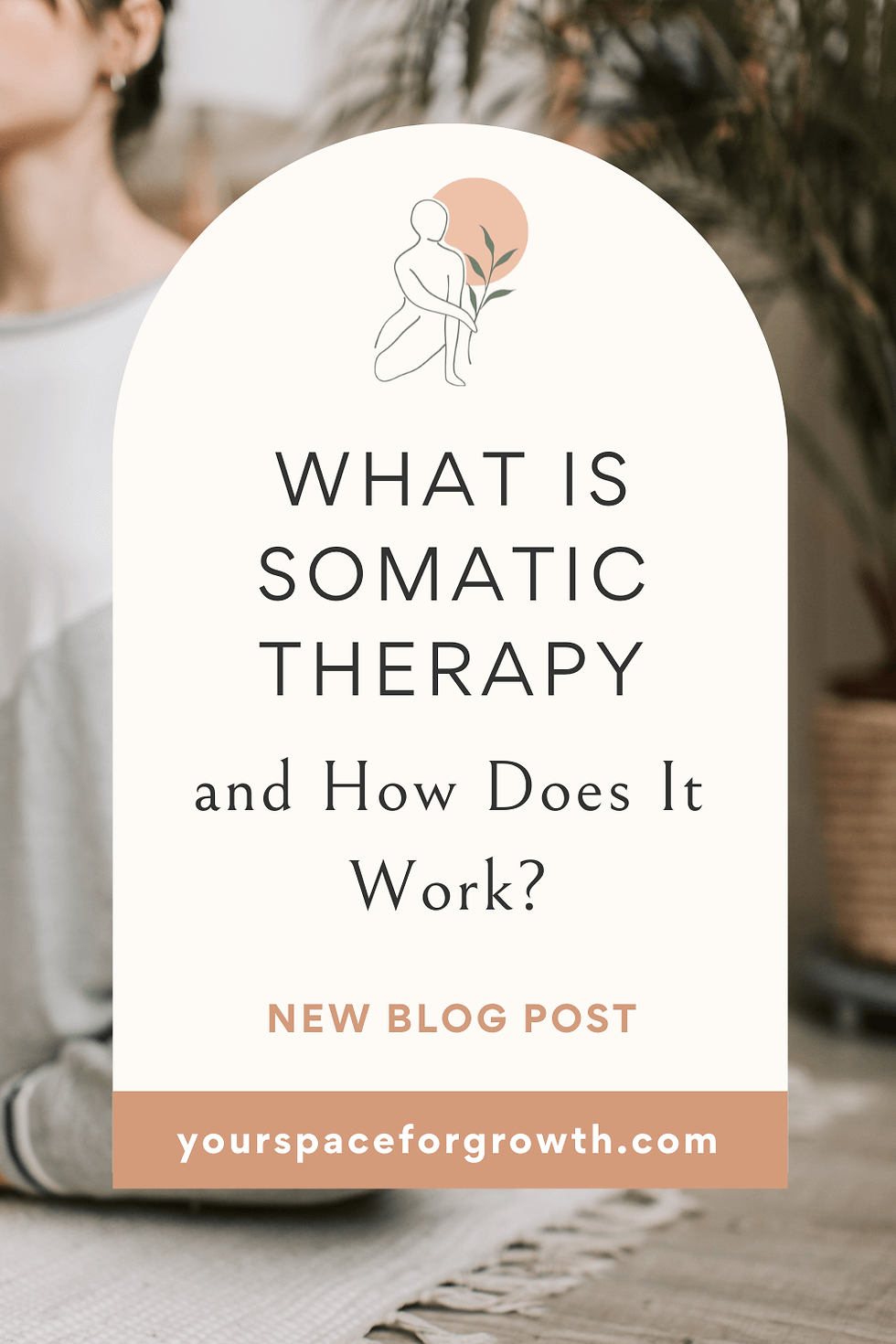What Is Somatic Therapy and How Does It Work?
- Natalie Moore, LMFT

- Aug 12, 2024
- 4 min read
Ever wondered how your body holds onto past experiences, emotions, or trauma? Somatic therapy could be the answer you're looking for. This innovative (yet intuitive) approach to mental health involves bringing awareness to the body to release tension and trauma from the nervous system. As someone who has been trained in somatic therapy in California and has practiced it for more than a decade, I can attest to how powerful this healing modality is. Let’s dive into what somatic therapy is, how it works, and who can benefit from it:

What is Somatic Therapy?
Somatic therapy is a type of therapy that involves bringing awareness to the body in intentional ways to release tension and trauma from the nervous system. This is done through the therapist guiding the client to bring their attention to in-the-moment body sensations while discussing current issues, past experiences or future hopes.
Types of Somatic Therapy
Mindfulness-Based Therapy
A vital component of somatic therapies is mindfulness, which is the intentional practice of bringing a non-judgmental awareness to the present moment. This involves noticing external stimuli like sounds, textures, and smells, as well as internal stimuli like hunger, butterflies in your stomach or physical pain.
Example of an Issue – Anxiety: Mindfulness-based therapies are particularly useful in treating anxiety because anxiety often presents with physical symptoms such as increased heart rate, shallow breathing, sweaty palms, and darting eyes. Mindfulness practice can help a client notice the anxiety when it’s mild to that they can consciously engage in holistic coping skills such as breathing more deeply, orienting to their environment and relaxing the muscles to break the anxiety cycle.
Hakomi
Hakomi is a somatic therapy that honors certain principles, one of which is organicity, the concept that the body and mind are always moving towards healing. This therapy supports the symptom instead of fighting against it. The idea is that if we fight against the symptom, we actually make it more entrenched, whereas if we support the symptom, we help the client get to a place where the symptom no longer serves a purpose (and therefore doesn't need to come up anymore.)
Example of an Issue – Depression: In Hakomi, instead of seeing symptoms of depression as something negative that needs to be gotten rid of, the symptoms such as extreme fatigue, are seen as the body signaling what it needs, a deep rest. The therapy supports that symptom and leans into it, helping the client get their needs met. Once the client is able to experience the restoration they are needing, the depression symptom of fatigue is no longer needed to slow the person down.
Somatic Experiencing
Somatic Experiencing (SE) aims to restore a sense of safety to the body following traumatic experiences. The idea is that oftentimes following traumatic incidents, the body's survival instincts of fight, flight, freeze and faint become encoded into the nervous system and need to be released to restore balance to the mind and body.
Example of an Issue – Trauma: SE therapists help clients release tension and trauma through the body by allowing for subtle shaking and vibrating in session and by helping complete fight/flight/freeze/faint cycles that were left incomplete during the traumatic event. This is done through "discharging" the trauma from the body using various techniques that help clients become more in touch with their body sensations, posture, breathing and movement.
Who Could Benefit from Somatic Therapy?
Anyone open to developing a greater connection to their body would benefit from somatic therapy, as long as they find a therapist with whom they feel safe and comfortable exploring emotional issues. Somatic therapy isn't just for people who have a diagnosable mental health condition -- it's also for people who are interested in optimal mental wellness and personal growth.
Promising Research in Somatic Therapy
More and more mental health practitioners are turning to somatic therapy as a treatment modality for healing trauma, and there is no shortage of anecdotal evidence of its effectiveness. However, these three studies show that there is scientific evidence to support these claims as well:
Final Thoughts
Somatic therapy is a safe and effective tool to treat a broad range of mental health concerns such as anxiety, depression and trauma. By focusing on the mind-body connection, this therapy helps clients release stored tension and trauma, leading to a more integrated and holistic healing process. If you're open to developing a deeper connection to your body and exploring emotional issues in a safe environment, somatic therapy might be the right choice for you.
Crisis Support
If you need help right away, please utilize the following crisis resources.
Disclaimer
This post is meant for educational purposes only and isn’t a substitute for diagnosis, assessment or treatment of mental conditions. If you need professional help, seek it out.
About the author

Hi! I'm Natalie. And my passion is helping ambitious, creative millennials achieve everything they want in life, career and relationships. I provide in-person therapy in Pasadena and online therapy throughout California. Click here to get started.

Comments